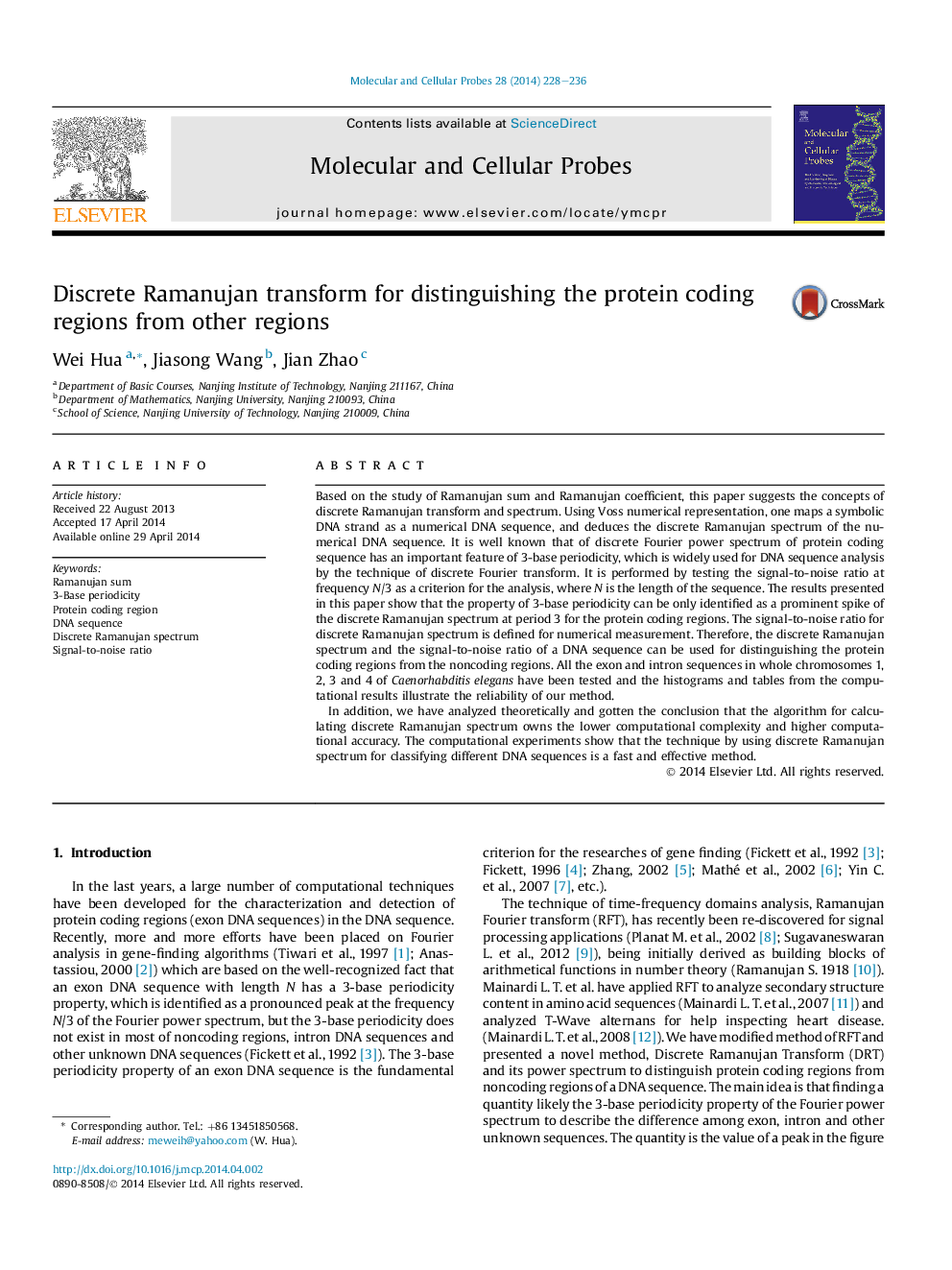| Article ID | Journal | Published Year | Pages | File Type |
|---|---|---|---|---|
| 2199599 | Molecular and Cellular Probes | 2014 | 9 Pages |
•We deduce the discrete Ramanujan spectrum of the numerical DNA sequence.•Protein coding regions can be identified through the discrete Ramanujan spectrum.•The signal-to-noise ratio for discrete Ramanujan spectrum is defined.•Exon and intron sequences show different values of signal-to-noise ratios.•The computation of discrete Ramanujan spectrum owns lower computational complexity.
Based on the study of Ramanujan sum and Ramanujan coefficient, this paper suggests the concepts of discrete Ramanujan transform and spectrum. Using Voss numerical representation, one maps a symbolic DNA strand as a numerical DNA sequence, and deduces the discrete Ramanujan spectrum of the numerical DNA sequence. It is well known that of discrete Fourier power spectrum of protein coding sequence has an important feature of 3-base periodicity, which is widely used for DNA sequence analysis by the technique of discrete Fourier transform. It is performed by testing the signal-to-noise ratio at frequency N/3 as a criterion for the analysis, where N is the length of the sequence. The results presented in this paper show that the property of 3-base periodicity can be only identified as a prominent spike of the discrete Ramanujan spectrum at period 3 for the protein coding regions. The signal-to-noise ratio for discrete Ramanujan spectrum is defined for numerical measurement. Therefore, the discrete Ramanujan spectrum and the signal-to-noise ratio of a DNA sequence can be used for distinguishing the protein coding regions from the noncoding regions. All the exon and intron sequences in whole chromosomes 1, 2, 3 and 4 of Caenorhabditis elegans have been tested and the histograms and tables from the computational results illustrate the reliability of our method.In addition, we have analyzed theoretically and gotten the conclusion that the algorithm for calculating discrete Ramanujan spectrum owns the lower computational complexity and higher computational accuracy. The computational experiments show that the technique by using discrete Ramanujan spectrum for classifying different DNA sequences is a fast and effective method.
